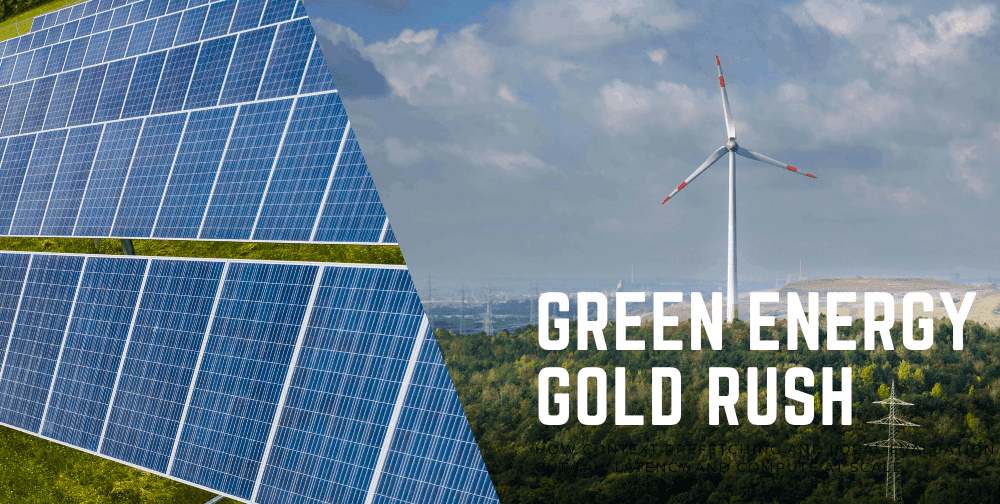Beyond the Hype: The Investor's Playbook for India's Green Energy Gold Rush

India is in the midst of a tectonic shift, an economic transformation so profound it is being measured in trillions of dollars and gigawatts. The country’s pivot to green energy is no longer a distant policy goal; it is a full-blown industrial revolution creating one of the most compelling investment narratives of the 21st century. With a target of 500 GW of renewable capacity by 2030, India is not just building solar and wind farms—it is rewiring its entire economic engine.
For global investors, this presents a generational opportunity. However, navigating this high-growth, high-stakes market requires a new playbook. The old rules of investing in emerging market infrastructure are insufficient for a sector being simultaneously shaped by government mandate, private ambition, and disruptive technology. Success demands a deeper understanding of how to value these new green assets, the distinct roles of public and private sector players, and the financial and technological tools needed to decipher the market’s complex signals. This is the definitive guide to moving beyond the hype and building a robust investment strategy for India’s green energy boom.
The Valuation Conundrum: Pricing the Green Transition
The first rule of this new market is that not all green assets are created equal. A simple “green premium” on a stock is a lazy and often misleading valuation metric. The real challenge lies in pricing the transition itself, which involves both creation and destruction of value. This is most evident when comparing the legacy public sector giants with the new-age private conglomerates.
For legacy giants like NTPC, the valuation puzzle is complex. As India’s largest power producer, its historical strength was built on a massive fleet of coal-fired thermal plants. Today, it is mandated to become a leader in renewables. Investors must balance the stable, predictable cash flows from its existing thermal plants against the massive capital expenditure required for its green pivot. Furthermore, they must price in the risk of “stranded assets”—older thermal plants that may be forced into early retirement. Tracking the nuances of the NTPC Limited share price reveals a market grappling with this very dichotomy: rewarding the promise of future growth while simultaneously discounting legacy carbon assets. The company’s ability to execute its renewable projects on time and on budget is the single most critical factor determining its future valuation.
In stark contrast, private players are building their empires from a clean slate, unburdened by a carbon-heavy past. Their valuations are pure-play bets on green growth, but they come with their own set of risks. These companies are often highly leveraged, relying on debt to fund their aggressive expansion. Their valuations are sensitive to interest rates, execution timelines, and the stability of Power Purchase Agreements (PPAs). Understanding their capital structure and project pipeline is therefore paramount.
The Twin Engines: Public Sector Scale vs. Private Sector Speed
India’s green revolution is being driven by two powerful, complementary engines: the scale of its Public Sector Undertakings (PSUs) and the speed of its private conglomerates. Investing wisely requires recognizing the unique strengths and weaknesses of each.
The public sector provides the bedrock for the transition. Companies like NTPC, SJVN, and NHPC are the “supertankers” of this revolution—massive, stable, and backed by the full faith of the government. Their primary advantages are access to cheap capital, vast land banks, and ownership of the existing transmission infrastructure. When the government needs to execute a large-scale project with policy certainty, it turns to its PSUs. For investors, these stocks often represent a lower-risk, dividend-paying way to gain exposure to the green energy theme. Their growth may be slower, but their stability is a crucial anchor for the entire ecosystem.
On the other end of the spectrum are the private sector “speedboats.” In stark contrast, private conglomerates like the Adani Group and Reliance Industries operate with blistering speed, driven by entrepreneurial ambition and access to global capital markets. Their strategy is often built on vertical integration—controlling every part of the value chain, from solar panel manufacturing and electrolyzer production to building the ports and transmission lines needed to support their projects. Adani Enterprises, acting as the group’s incubator, is pioneering large-scale green hydrogen and integrated manufacturing ecosystems. The market’s reaction to this high-risk, high-reward strategy is best understood by analyzing the Adani Enterprises Limited share price, which often acts as a barometer for investor sentiment towards India’s private infrastructure ambitions. These companies are pushing the boundaries of scale and technology, but their aggressive, debt-fueled growth models require careful scrutiny from investors.
Financing the Future: The Unsung Heroes of Green Capital
A $1 trillion infrastructure overhaul cannot be funded by corporate balance sheets alone. This green infrastructure buildout is impossible without specialized capital, de-risking mechanisms, and a robust financial pipeline. This is where entities like the Indian Renewable Energy Development Agency (IREDA) become indispensable.
As a government-backed Non-Banking Financial Company (NBFC), IREDA’s sole mandate is to finance renewable energy projects. It acts as a critical intermediary, channeling low-cost funds from international and domestic sources into the hands of developers. By providing long-term, specialized loans, it absorbs some of the initial risks associated with greenfield projects, making the sector more attractive for private investment. Its role is so foundational that its financial health is a proxy for the entire sector. A growing loan book at IREDA signals a healthy and expanding pipeline of new solar, wind, and green hydrogen projects across the country. A deep dive into the Indian Renewable Energy Development Agency Limited share price offers investors a unique, behind-the-scenes look at the financial engine powering India’s green ambitions. For those who want to invest in the growth of the entire ecosystem rather than betting on a single project developer, financial enablers like IREDA offer a compelling alternative.
The Tech Edge: Using Data to Navigate a Dynamic Market
The final rule in this new playbook is to embrace technology. The sheer volume of information—policy updates from multiple ministries, fluctuating commodity prices for solar modules, complex project financing details, and real-time energy generation data—makes the Indian green energy sector a data-intensive environment where traditional stock analysis falls short.
Investors now require platforms that can aggregate vast amounts of information, provide sophisticated charting tools, and deliver detailed financial data to cut through the noise. Evaluating a company’s debt-to-equity ratio, its cash flow from operations, and its return on capital employed are just as important as its stated gigawatt targets. For those looking to perform granular analysis on Indian equities, utilizing a comprehensive platform like Bullrun can provide the necessary edge, offering detailed stock data and technical tools in one place. These tools allow investors to test their hypotheses against hard data and make decisions based on fundamentals rather than market hype.
Beyond raw data, interpreting the market requires expert insight and a broader economic perspective. Geopolitical events, shifts in global commodity prices, and domestic policy changes all influence investor sentiment and capital flows. A sudden spike in polysilicon prices or a change in import duties can have a material impact on the profitability of solar developers. Staying informed through reliable financial news and expert commentary, such as that offered by platforms like The Stock Prime, is no longer a luxury but a necessity for making well-rounded investment decisions in this dynamic sector.
Conclusion: A Marathon, Not a Sprint
India’s green energy revolution is not a fleeting trend; it is the bedrock of its future economic growth. The investment opportunity is immense, but it is layered with complexity. The winners in this new market will be those who look beyond the headlines and understand the intricate dance between public sector stability and private sector ambition. They will be the investors who appreciate the foundational role of green finance and leverage modern technology to their advantage. This is a long-term story, a marathon that will reward patience, diligence, and a commitment to data-driven decision-making. The gold rush has begun, but only the most well-equipped prospectors will find lasting success.

Source: Beyond the Hype: The Investor's Playbook for India's Green Energy Gold Rush




